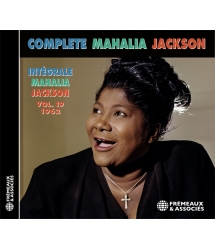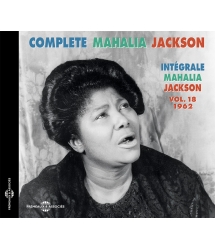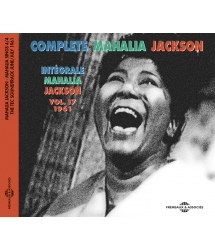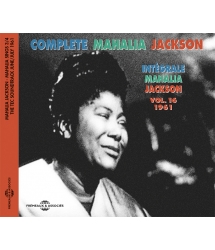- Our Catalog
- Philosophy
- Philosophers of the 20th century and today
- History of Philosophy (PUF)
- Counter-History and Brief Encyclopedia by Michel Onfray
- The philosophical work explained by Luc Ferry
- Ancient thought
- Thinkers of yesterday as seen by the philosophers of today
- Historical philosophical texts interpreted by great actors
- History
- Books (in French)
- Social science
- Historical words
- Audiobooks & Literature
- Our Catalog
- Jazz
- Blues
- Rock - Country - Cajun
- French song
- World music
- Africa
- France
- Québec / Canada
- Hawaï
- West Indies
- Caribbean
- Cuba & Afro-cubain
- Mexico
- South America
- Tango
- Brazil
- Tzigane / Gypsy
- Fado / Portugal
- Flamenco / Spain
- Yiddish / Israel
- China
- Tibet / Nepal
- Asia
- Indian Ocean / Madagascar
- Japan
- Indonesia
- Oceania
- India
- Bangladesh
- USSR / Communist songs
- World music / Miscellaneous
- Classical music
- Composers - Movie Soundtracks
- Sounds of nature
- Our Catalog
- Youth
- Philosophy
- News
- How to order ?
- Receive the catalog
- Manifesto
- Dictionnary











- Our Catalog
- Philosophy
- Philosophers of the 20th century and today
- History of Philosophy (PUF)
- Counter-History and Brief Encyclopedia by Michel Onfray
- The philosophical work explained by Luc Ferry
- Ancient thought
- Thinkers of yesterday as seen by the philosophers of today
- Historical philosophical texts interpreted by great actors
- History
- Books (in French)
- Social science
- Historical words
- Audiobooks & Literature
- Our Catalog
- Jazz
- Blues
- Rock - Country - Cajun
- French song
- World music
- Africa
- France
- Québec / Canada
- Hawaï
- West Indies
- Caribbean
- Cuba & Afro-cubain
- Mexico
- South America
- Tango
- Brazil
- Tzigane / Gypsy
- Fado / Portugal
- Flamenco / Spain
- Yiddish / Israel
- China
- Tibet / Nepal
- Asia
- Indian Ocean / Madagascar
- Japan
- Indonesia
- Oceania
- India
- Bangladesh
- USSR / Communist songs
- World music / Miscellaneous
- Classical music
- Composers - Movie Soundtracks
- Sounds of nature
- Our Catalog
- Youth
- Philosophy
- News
- How to order ?
- Receive the catalog
- Manifesto
- Dictionnary
MAHALIA JACKSON
MAHALIA JACKSON
Ref.: FA1324
EAN : 3561302132426
Artistic Direction : JEAN BUZELIN
Label : Frémeaux & Associés
Total duration of the pack : 1 hours 4 minutes
Nbre. CD : 1
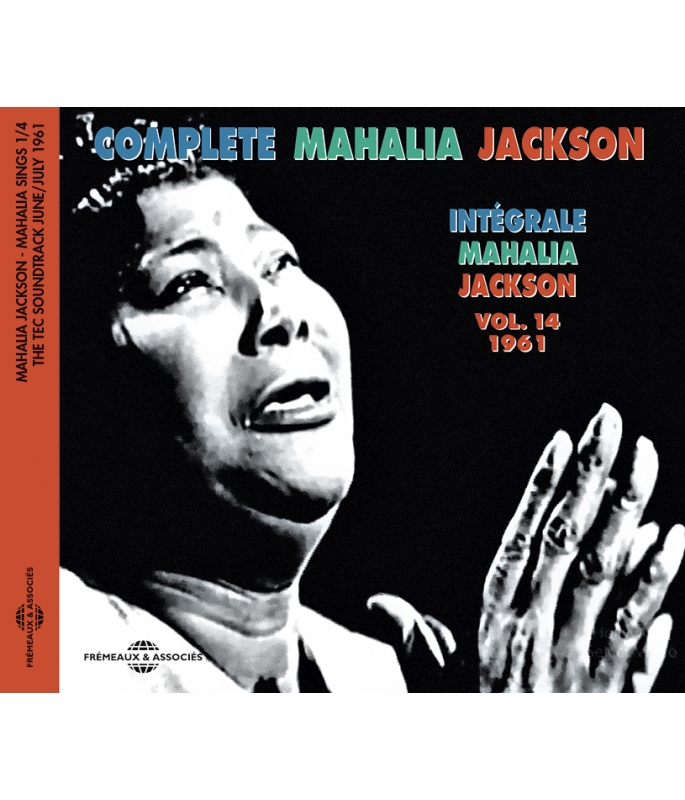
MAHALIA JACKSON
MAHALIA JACKSON
The four volumes of “Mahalia Jackson Sings” that form part of our Complete Mahalia Jackson comprise an exceptional recording and historical event. They contain the sound track of all the songs fi lmed by the TEC television channel in June and July 1961. Jean BUZELIN
The four CDs which we have produced and which are intended to be listened to as a whole, represent the result of long research and, in addition to being a world fi rst, are an outstanding addition to the rich heritage left by the greatest Gospel singer of the 20th Century. Patrick FRÉMEAUX
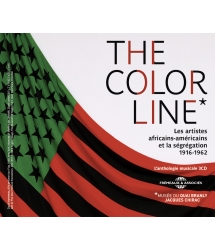
ANTHOLOGIE EXPOSITION MUSEE DU QUAI BRANLY DU 4...
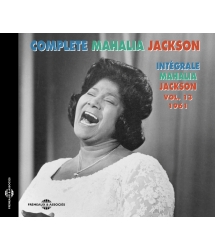
1961
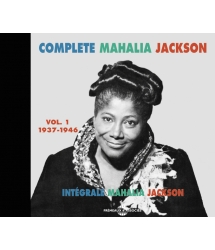
1937-1946



-
PisteTitleMain artistAutorDurationRegistered in
-
1You'll Never Walk AloneMahalia JacksonR. Rogers00:03:311961
-
2Just As I AmMahalia JacksonW.B. Bradbury00:03:081961
-
3Lord Don't Move The MontainMahalia JacksonD. Akers00:03:331961
-
4Highway To HeavenMahalia JacksonT.A. Dorsey00:02:321961
-
5The Lord's PrayerMahalia JacksonA.H. Malotte00:03:231961
-
6Tell It Sing It Shout ItMahalia JacksonJ. Rowe00:02:381961
-
7The RosaryMahalia JacksonNevin00:03:101961
-
8My Faith Looks Up To TheeMahalia JacksonPalmer00:03:491961
-
9Come On Children Let's SingMahalia JacksonH.E. Smith00:02:491961
-
10Somebody Bigger Than You And IMahalia JacksonJ. Lange00:03:021961
-
11I BelieveMahalia JacksonE. Drake00:03:041961
-
12My Lord And IMahalia JacksonLittle00:03:011961
-
13My Father Watches Over MeMahalia JacksonW.C. Martin00:02:511961
-
14I Asked The LordMahalia JacksonJ. Lange00:03:441961
-
15Joshua Fit The Battle Of JerichoMahalia JacksonTraditionnel00:02:371961
-
16Gos Will Take Care Of YouMahalia JacksonW.C. Martin00:03:301961
-
17Didn't It RainMahalia JacksonTraditionnel00:02:431961
-
18Throw Out The LifelineMahalia JacksonE.S. Ufford00:02:351961
-
19Down By The River SideMahalia JacksonTraditionnel00:02:571961
-
20Hallelujah Tis DoneMahalia JacksonP.P. Bliss00:02:411961
-
21By His WordMahalia JacksonHuntley00:02:511961
CLICK TO DOWNLOAD THE BOOKLET
Mahalia sings FA1324
INTÉGRALE MAHALIA JACKSON
VOL. 14 - 1961
Mahalia Sings 1/4
THE TEC SOUNDTRACK JUNE/JULY 1961
Les quatre volumes « Mahalia Jackson Sings » que nous vous présentons dans le cadre de notre Intégrale Mahalia Jackson, constituent un document et un évènement discographique exceptionnels. Ils contiennent en effet la bande sonore de la totalité des chansons filmées par la chaîne de télévision TEC en juin et juillet 1961.
Jean BUZELIN
Les quatre CD réalisés par Jean Buzelin, inséparables et complémentaires, représentent le résultat de longues recherches et, au-delà d’une première mondiale, sont un témoignage patrimonial exceptionnel qui enrichit magistralement l’œuvre de la plus grande chanteuse de Gospel du XXe siècle.
Patrick FRÉMEAUX
The four volumes of “Mahalia Jackson Sings” that form part of our Complete Mahalia Jackson comprise an exceptional recording and historical event. They contain the sound track of all the songs filmed by the TEC television channel in June and July 1961.
Jean BUZELIN
The four CDs which we have produced and which are intended to be listened to as a whole, represent the result of long research and, in addition to being a world first, are an outstanding addition to the rich heritage left by the greatest Gospel singer of the 20th Century.
Patrick FRÉMEAUX
MAHALIA JACKSON Vol. 14 – 1961 - MAHALIA SINGS Part 1
1. YOU’LL NEVER WALK ALONE 3’29
2. JUST AS I AM 3’06
3. LORD, DON’T MOVE THE MOUNTAIN 3’32
4. HIGHWAY TO HEAVEN 2’30
5. THE LORD’S PRAYER 3’22
6. TELL IT, SING IT, SHOUT IT 2’37
7. THE ROSARY 3’09
8. MY FAITH LOOKS UP TO THEE 3’47
9. COME ON CHILDREN, LET’S SING 2’47
10. SOMEBODY BIGGER THAN YOU AND I 3’00
11. I BELIEVE 3’02
12. MY LORD (AND I) 2’59
13. MY FATHER WATCHES OVER ME 2’50
14. I ASKED THE LORD 3’43
15. JOSHUA FIT THE BATTLE OF JERICHO 2’35
16. GOD WILL TAKE CARE OF YOU 3’28
17. DIDN’T IT RAIN! 2’41
18. THROW OUT THE LIFELINE 2’34
19. DOWN BY THE RIVER SIDE 2’55
20. HALLELUJAH, ‘TIS DONE! 2’39
21. BY HIS WORD 2’51
INTÉGRALE MAHALIA JACKSON - VOL. 14 – 1961
Par Jean Buzelin
Les quatre volumes « Mahalia Jackson Sings » que nous vous présentons dans le cadre de notre Intégrale Mahalia Jackson, constituent un document et un évènement discographique exceptionnels. Ils contiennent en effet la bande sonore de la totalité des chansons filmées par la chaîne de télévision TEC en juin et juillet 1961. Certaines d’entre elles – une petite partie – avaient été publiées en microsillons 33 tours dans les années 70, puis reprises en CD sans aucune mention de dates ni de provenance, et avec une faible qualité sonore. Une partie plus importante de ces petits films, mais non l’intégralité malgré l’indication de l’éditeur qui les attribue à la NBC et non à la TEC, et dont les titres, mentionnés seulement sur internet, sont erronés ou hautement fantaisistes, a été publiée plus récemment en DVD.
Après une triomphale tournée de près de deux mois en Europe et au Moyen-Orient, Mahalia Jackson est de retour au pays vers la fin du mois de mai 1961, et pose ses valises chez elle à Chicago. Pas pour longtemps car, pendant son absence, son producteur de chez Columbia, Irving Townsend, et quelques autres, se sont occupés de la préparation des séances d’enregistrements filmés qui doivent être réalisés par la chaîne Television Enterprise Corporation, dont le président est un certain Harold Goldman. La chanteuse doit enregistrer quelques quatre-vingt-cinq chansons de 3 à 4 minutes en quinze jours, réparties en une dizaine de séances, soit environ huit par jour, en commençant à 9 heures du matin pour s’achever à 5 heures de l’après-midi. Ce qui n’est pas sans l’inquiéter. Après une tournée épuisante, elle n’a que trois semaines pour se reposer et se préparer. Mais comme chacun la persuade qu’elle est capable de relever ce défi, Mahalia se laisse convaincre et signe de bonne grâce le contrat. On prépare l’équipe : la fidèle Mildred Falls, qui l’accompagna en Europe, tiendra le piano en alternance avec Edward C. Robinson, et assumera la direction musicale ; Louise Overall Weaver sera à l’orgue, éventuellement suppléée en cas de besoin par Dorothy V. Simmons (du Simmons-Akers Trio) ; une section rythmique composée de trois musiciens de jazz tout terrain, Barney Kessel (guitare), Red Mitchell (contrebasse), Shelly Manne (batterie), à qui l’on demandera de bien marquer le gospel beat, complètera l’effectif musical1. Un secrétaire, Butch Thornton, s’occupe de l’intendance, et le tout est placé sous la direction artistique de Larry Peerce. Les enregistrements auront lieu aux studios de la Paramount, avenue Melrose à Hollywood. Le décor est spartiate et austère : quelques ogives « gothiques » découpées, parfois quelques arbres artificiels, des bancs, un vitrail, souvent rien du tout, des éclairages fixes, peu de mouvements de caméra. Cet environnement presque nu, qui peut paraître dicté par des raisons économiques, a le mérite de mettre en valeur Mahalia qui, filmée simplement et sans aucuns effets, diffuse une présence indéniable, forte et particulièrement prenante, notamment lorsque les gros plans s’attardent sur son visage qui laisse voir sa totale implication2.
D’après Laurraine Goreau, la biographe de Mahalia Jackson3, qui a sans doute assisté aux séances, une pause de 5 minutes était prévue chaque heure, ainsi qu’un break pour le déjeuner, les huit chansons devant être impérativement mises en boîtes pour 5 heures du soir. La première séance se serait ainsi déroulée dans l’ordre suivant : Where He Leads Me I Will Follow – Because His Name Is Jesus – Precious Lord – Holding My Savior’s Hand – In the Garden – You’ll Never Walk Alone – To Me, It’s So Wonderful – God Will Take Care of You. Et voici le programme de la seconde : Have Thine Own Way – Elijah Rock – God Be With You – Just As I Am – The Holy Bible – Hold Me – It Is No Secret – I’m a Child of the King. Ensuite, Laurraine Goreau ne poursuit plus l’énumération des titres de chaque séance, se contentant d’en citer par-ci, par-là quelques-uns3.
Mais ce travail intensif se fait aux dépends de ses cordes vocales. Après plusieurs séances, Mahalia a contracté une laryngite et sa gorge doit être soignée. Tout cela a des effets sur le planning, et le producteur téléphone quotidiennement, rappelant que chaque journée lui coûte 3 500 dollars de location du studio ! Les enregistrements reprennent car tout doit être bouclé pour le 30 juin. Mais, par la force des choses, il faudra déborder un peu, et la toute dernière séance a lieu le vendredi 7 juillet. Mahalia enregistre ce jour-là une série de chants de Noël : Silent Night, O, Come All Ye Faithful, O Little Town of Bethlehem, A Star Stood Still, Sweet Little Jesus Boy et Joy to the World.
84 petites bobines en 16 mm (des clips dirait-on aujourd’hui) sont ainsi mises en boîte et seront diffusées ultérieurement, les unes après les autres, sur la chaîne de télévision4. Tout le monde est enchanté : Townsend, Peerce, et particulièrement Mr Goldman. Chacun peut bien se féliciter, mais c’est avant tout Mahalia Jackson elle-même, l’artisane principale de cette magnifique série de chants sacrés de toutes sortes (negro spirituals traditionnels, hymnes composés, gospel songs…) ; sa voix extraordinaire atteint ici une plénitude exceptionnelle, une ampleur magistrale, une ferveur bouleversante.
Voici donc la bande sonore de l’intégrale des 82 titres diffusés par la chaîne de télévision ; ils ne sont pas présentés dans l’ordre chronologique, mais selon le classement établi par le collectionneur Mark Cantor, lequel fait autorité : « Ma numérotation est basée sur le registre principal des films. Je suis sûr qu’ils n’ont pas été enregistrés/filmés dans l’ordre de la liste, mais c’est ainsi que les producteurs l’ont eux-mêmes définie. »
Ces enregistrements filmés n’ont pas la qualité sonore des disques réalisés en studio à l’époque, en particulier chez Columbia, la maison de disques de Mahalia Jackson, mais nous avons effectué tout ce qui était possible, avec Christophe Heynault et Pierre Brousses du studio Art & Son, pour l’améliorer, même s’il reste quelques traces de pleurage qu’il est impossible de supprimer. Mais l’intérêt exceptionnel du document justifiait sa publication.
Cette intégrale « Mahalia Jackson Sings » présente la plus large sélection possible du répertoire de la chanteuse, et même bien au-delà. En effet, à côté des thèmes qui lui sont familiers et qui font partie, pour la plupart, de ses récitals habituels (You’ll Never Walk Alone, Joshua Fit the Battle, Didn’t It Rain, Down By the Riverside, It Don’t Cost Very Much, When the Saints, Elijah Rock, I Found the Answer…), on en relève quelques-uns qu’elle avait gravé au début de sa carrière (I Want To Rest -son premier disque Apollo en 1946, A Child Of the King - 1949, I Do, Don’t You - 1950). Enregistrés beaucoup plus récemment, d’autres sont toujours dans ses cordes (Somebody Bigger Than You And I, I Believe, My Lord, Holding My Savior’s Hand, I Want To Be a Christian, The Only Hope We Have…).
Mais, et ce n’est pas le moins étonnant, presque la moitié des titres est totalement inédite, et seuls une poignée d’entre eux sera enregistrée ultérieurement sur disque. D’où l’intérêt exceptionnel de leur publication. Il est d’ailleurs fort probable que Mahalia en ait appris certains pour l’occasion, ou qui ne lui sont pas familiers ; ainsi nous la voyons, à plusieurs reprises, tenir la partition en main pour déchiffrer les paroles en direct. Nous ne percevons pourtant la moindre hésitation, la moindre « faute » d’interprétation dans tous ces chants qu’elle a choisis, ou qui lui ont peut-être été proposés. Elle les fait siens, définitivement. Un tour de force et une série de performances exceptionnelles qui laissent l’auditeur – ou le spectateur – pantois et absolument transporté.
Croyez-vous que la chanteuse se reposa après une telle épreuve ? Pas du tout, le dimanche 16 juillet, elle chante au Madison Square Garden, à New York, dans un spectacle organisé par Joe Bostic, auquel participe une pléiade de grands noms du gospel, comme les Caravans avec Albertina Walker, et l’Ernestine Washington Temple Choir, et avec la présence de Martin Luther King qui apparaîtra sur scène juste avant Mahalia. Ces deux grandes figures de la « nation noire » n’ont pas fini de se rencontrer !
Jean BUZELIN
© FRÉMEAUX & ASSOCIÉS 2017
Notes :
1) En réalité, Edward Robinson jouera principalement de l’orgue – Dorothy Simmons ne semble pas avoir participé aux enregistrements – tandis que la section rythmique ne sera peut-être pas convoquée à toutes les séances, hormis peut-être Shelly Manne, car un certain nombre de chants, en particulier sur tempo lent, ne seront accompagnés que par le duo piano/orgue, avec parfois quelques ponctuations de percussions. Si Louise Weaver est une vieille complice de Mahalia, Edward Robinson apparaît ici pour la première fois dans l’entourage de la chanteuse ; on l’entendra ensuite souvent à l’orgue ou au piano et il deviendra son accompagnateur régulier après l’éviction brutale de Mildred Falls (on le verra au Festival d’Antibes en 1968). Quant à Shelly Manne et Red Mitchell, ils seront sollicités pour de futures séances de studio en 1962/63. Notons que les musiciens apparaissent à plusieurs reprises sur l’écran, Mildred Falls étant toujours au piano, Edward Robinson à l’orgue.
2) L’habillement de Mahalia Jackson se compose sobrement de deux aubes (une revêtue beaucoup plus que l’autre), parfois une robe longue blanche, et très rarement un tailleur et une robe imprimée.
3) Laurraine Goreau : Mahalia (Lion Pub., UK 1976 - 2e édition).
4) O Little Town of Bethlehem et Joy to the World, cités par Laurraine Goreau, n’apparaissent pas dans la liste des films établie par le collectionneur Mark Cantor ; il est fort possible qu’ils n’aient jamais été diffusés à la télévision. Mark Cantor répond à nos interrogations : « Il y a problème, de toutes manières, avec les titres de Noël. Maintenant, il me revient que ces films venaient des « 3 Complete sets » de courts-métrages, et édités à l’origine par les producteurs/distributeurs. Les collections sont complètes et peuvent ne pas correspondre avec les titres de chansons mentionnés par Laurraine Goreau dans son livre Mahalia. Je ne sais pas où elle a obtenu son information et d’où viennent les divergences, mais il y a quatre (et non six) titres de Noël dans la collection. Comme vous pouvez voir, les deux titres que vous mentionnez n’apparaissent pas comme ayant fait partie des films réalisés ; ils ont peut-être été proposés, voire filmés et enregistrés, mais pas réalisés dans les séries. »
La première partie en détail
Le premier volume de notre « Mahalia Jackson Sings » s’ouvre avec le standard à succès de Richard Rogers et Oscar Hammerstein, You’ll Never Walk Alone, que s’est appropriée durablement la chanteuse depuis 1954 et son premier album Columbia. Cette chanson, filmée lors de la première séance, va servir d’indicatif à tous les « clips » diffusés à la télévision. Une autre chanson célèbre, I Believe, qui figure au répertoire de Mahalia comme à celui de nombreux artistes de gospel, fait également partie des premiers titres proposés.
Le reste présente une large sélection de thèmes divers, à commencer par trois negro spirituals traditionnels connus que Mahalia Jackson chante souvent : Joshua Fit the Battle of Jericho, Didn’t It Rain, selon l’arrangement de Roberta Martin, et Down By the Riverside, le jubilee song. Plusieurs gospel songs, dont Don’t Move the Mountain de Doris Akers, Highway To Heaven de Thomas A. Dorsey, dont ce sera sa seule version enregistrée, et Come On Children Let’s Sing, apportent une note dynamique à l’ensemble.
Mais, à côté du Notre Père mis en musique par Albert Malotte (connu pour ses musiques de films), ce sont les hymnes qui constituent la moitié du disque : Just As I Am de Charlotte Elliott, l’une de ses préférées, The Rosary (1898) qu’elle va rapidement enregistrer sur son prochain 33 tours – cet hymne était chantée lors des offices sur le Titanic –, My Faith Looks Up To Thee (1830), My Lord (1890) qu’elle transforme en un véritable gospel song, le cantique Throw Out the Lifetime (1888) du preacher baptiste blanc Edwin Ufford, et Hallelujah, ‘Tis Done (1874) de Paul Bliss, un ministre du culte anglais. Mahalia ne réenregistrera jamais ces deux thèmes, pas plus que l’hymne méthodiste God Will Take Care of You, écrite par Civilla Martin en 1904. Nombre d’hymnes du XIXe siècle (et même avant, pensons à ceux du Dr. Watts) sont en effet souvent l’œuvre d’auteurs blancs, en particulier des missionnaires baptistes et méthodistes. On peut ainsi constater comment les interprètes afro-américains se les approprient et les modèlent à leur manière.
Ajoutons-y deux solides morceaux du compositeur Johnny Lange, Somebody Bigger Than You and I et
I Asked the Lord qui font partie des grandes réussites de la chanteuse, et un gospel hymn, Tell It, Sing It, Shout It, dû à James Rowe. Présente dans la plupart des morceaux, la section rythmique fournit un excellent accompagnement.
Voilà largement de quoi savourer la beauté et la grandeur des interprétations de Mahalia Jackson, au sommet de son art, avant la suite au prochain numéro.
Jean BUZELIN
© FRÉMEAUX & ASSOCIÉS 2017
Jean Buzelin est l’auteur de Negro Spirituals et Gospel Songs, Chants d’espoir et de liberté (Ed. du Layeur/Notre Histoire, Paris 1998) ; il collabore à la Gospel Discography de Cedric J. Hayes & Robert Laughton (rubriques Mahalia Jackson, Sister Rosetta Tharpe, Golden Gate Quartet, etc.).
Nous remercions particulièrement pour leur concours et leur aide Mark Cantor et Robert Laughton qui nous ont copié de rares films, ainsi que Philippe Baudoin et Isabelle Marquis, Patrice Buzelin, André Clergeat (†), Michel Pfau (†), Jean-Paul Ricard, Michèle et Joyce Waterhouse qui nous ont fourni de bonnes pistes de recherches.
Photos : X (D.R.)
Nous dédions ce volume à la mémoire de notre ami André Clergeat qui nous a mis sur la voie et nous a encouragé à poursuivre nos recherches.
COMPLETE MAHALIA JACKSON - VOL. 14 – 1961
By Jean Buzelin
The four volumes of “Mahalia Jackson Sings” that form part of our Complete Mahalia Jackson comprise an exceptional recording and historical event. They contain the sound track of all the songs filmed by the TEC television channel in June and July 1961. A small selection of these was issued on several long player records in the 70s and later reprised on CD, without any mention of date or provenance and with extremely poor sound quality. A larger extract of these small films has recently been issued on DVD but not the whole of them, in spite of the publisher claims attributing them to NBC rather than TEC and on which the titles, mentioned only on Internet, are either wrong or completely invented.
After a triumphant tour in Europe and the Middle East that lasted almost two months, Mahalia Jackson returned to Chicago in late May 1961. However, she didn’t stay at home very long as, during her absence, her producer at Columbia Irving Townsend, along with several others, had arranged several recording sessions to be filmed by the Television Enterprise Corporation channel, whose president was a certain Harold Goldman. She would have to record eighty-five songs, each lasting three to four minutes, over a period of fifteen days, roughly ten or so sessions which meant about eight a day, beginning at 9 in the morning and finishing around 5 in the afternoon. She wasn’t very happy about this. After a grueling tour she only had three weeks to rest and prepare herself. But after everybody persuaded her she was up to the challenge, Mahalia agreed to sign the contract. The backing group was chosen: the loyal Mildred Falls, who had accompanied her in Europe, on piano alternating with Edward C. Robinson, and also in charge of the music; Louis Overall Weaver on organ, to be replaced if necessary by Dorothy V. Simmons ( of the Simmons-Akers Trio). A rhythm section composed of three jazz musicians, Barney Kessel (guitar), Red Mitchell (double bass), Shelly Manne (drums), whose job it was to provide the Gospel beat, completed the line-up1. A secretary, Butch Thornton, was in charge of finances and the artistic director was Larry Peerce. The recordings took place at the Paramount Studios in Melrose, Hollywood. The décor was sparse and austere: some silhouettes of Gothic arches, a few artificial trees, benches, a stained glass window, sometimes nothing at all, fixed lighting and barely any camera movement. This almost empty setting, probably the result of cost cutting, had the advantage of placing the focus on Mahalia filmed very simply, without any additional effects, allowing her personality to dominate, particularly during the lingering facial close-ups that showed her complete involvement in what she was singing2.
According to Laurraine Goreau, Mahalia’s biographer3, who doubtless was present at the sessions, a 5-minute break was allotted every hour, as well as a break for lunch, but the final take of the eight songs had to be done by 5 o’clock in the evening. The titles from the first session were recorded in the following order: Where He Leads Me I Will Follow - Because His Name Is Jesus - Precious Lord - Holding My Savior’s Hand - In The Garden - You’ll Never Walk Alone - To Me, It’s So Wonderful - God Will Take Care Of You. And the second session: Have Thine Own Way – Elijah Rock – God Be With You – Just As I Am – The Holy Bible – Hold Me – It Is No Secret – I’m A Child Of The King. After this Laurraine Goreau no longer gives the programme for each session, merely mentioning some here and there3.
However, this intensive work load took its toll on Mahalia’s vocal chords. After several sessions, she got laryngitis and her throat had to be treated. All this affected the planning with daily phone calls from the producer reminding them that renting the studio was costing him 3,500 dollars a day! So the recordings began again and were definitely supposed to finish by 30 June but inevitably overran a little with the final session on Friday 7 July. On that day Mahalia recorded a series of Christmas songs: Silent Night, Oh Come All Ye Faithful, Oh Little Town Of Bethlehem, A Star Stood Still, Sweet Little Jesus Boy and Joy To The World. 84 small 16mm clips were put in the can to be broadcast later on television4. Everybody was delighted: Townsend, Peerce and especially Mr. Goldman. While they could all congratulate themselves, it was Mahalia Jackson herself who was the principal architect of this magnificent series of religious songs of all kinds (traditional Negro Spirituals, Hymns, Gospel songs …), her extraordinary voice soaring to exceptional heights or sinking to a beautiful sonority, the whole imbued with her own overwhelming and extremely moving fervor.
So here is the sound track of the entire 82 titles broadcast on television. They are not presented in chronological order but according to the classification by collector Mark Cantor, who specifies: “My designation of number is based on what is printed on the actual film credits. I am sure they were not filmed/ recorded in the order in the list, but this is how the producers themselves released them.”
Although the sound quality of these filmed recordings is not as good as studio recordings of the era, especially by Columbia, Mahalia’s regular recording company, we have done the utmost with the Art & Son studio to improve it, but there is still the occasional wow or flutter that was impossible to eradicate. However, the undeniable interest of the collection justifies its issue.
This complete “Mahalia Jackson Sings” includes the largest selection possible of the singer’s repertoire and even more. In addition to the titles that are associated with her and regularly formed part of her concerts (You’ll Never Walk Alone, Joshua Fit The Battle, Didn’t It Rain, Down By The Riverside, It Don’t Cost Very Much, When The Saints, Elijah Rock, I Found The Answer …), there are some that were recorded early in her career (I Want To Rest, her first Apollo record in 1946, A Child Of The King – 1949, I Do Don’t You – 1950). Other more recent recordings have always been part of her song sheet (Somebody Bigger Than You And I, I Believe, My Lord, Holding My Savior’s Hand, I Want To Be A Christian, The Only Hope We Have …).
Amazingly most of these titles have never been issued before and only a handful of them were later recorded on disc. Moreover, it is very likely that Mahalia was not familiar with several of them and learnt them for the show as we see her on more than one occasion holding the score to read the lyrics directly. However, there is never a sign of the slightest hesitation or glitch in her interpretation in any of the songs, whether she had chosen them herself or they had been suggested to her. An amazing feat and an impressive performance that leaves the listener – or the spectator – spellbound and completely carried away.
One may have thought that the singer would have taken a break after such a strenuous stint but not at all! Sunday, 16 July saw her singing at Madison Square Garden in New York, in a show organized by Joe Bostic, alongside a throng of Gospel greats that included the Caravans with Albertina Walker and the Ernestine Washington Temple Choir. Martin Luther King was also present and appeared on stage just before Mahalia. This was not the only time these two great personalities of the “African American” nation would meet!
Notes
1) In fact it is mainly Edward Robinson on organ – Dorothy Simmons does not appear to have taken part in the recordings – while the rhythm section was probably got together for each session, with the possible exception of Shelly Manne, for numerous titles, in particular slow tempo ones, are backed by a piano/organ duo, with occasionally the intervention of drums. If Louise Weaver was an old friend of Mahalia’s while this is Edward Robinson’s first appearance with the singer; later he was often heard on organ or piano and became her regular accompanist after the brutal sacking of Mildred Falls (he was at the Antibes Festival in 1968). Both Shelly Manne and Red Mitchell were invited back for studio sessions in 1962/63.
2) Mahalia was dressed soberly either in one of two surplices (one more decorative than the other), sometimes a long white robe or, very rarely, in a tailored jacket and a printed dress.
3) Laurraine Goreau: Mahalia (Lion Pub., UK 1976 – 2nd edition).
4) Oh Little Town Of Bethlehem and Joy To The World, mentioned by Laurraine Goreau, do not appear in collector Mark Cantor’s list of films based on the actual broadcasts: it is possible that they were never broadcast on television. The answer of Mark Cantor : “There is a problem, however, with the Christmas titles. Now, keep in mind that these films come from the three complete sets of the films shorts, as sent out by the original producer/distributor. The collections are complete, and they do not match the song titles as noted by Laurraine Goreau in her book Mahalia. I do not know where she got her information, and where the discrepancy arrises from, but these are the four (not six) Christmas titles in the collection. As you can see, the two titles that you note appear not to have been part of the released films; they may have been proposed, even filmed and recorded, but not released with the series.”
Part 1: Details
The first volume of our “Mahalia Jackson Sings” opens with the Rogers and Hammerstein hit You’ll Never Walk Alone which was first taken up by the singer on her first Columbia recording in 1954. This song, filmed during the first session, serves as the signature tune for all the clips broadcast on television. The well-known, I Believe, that was not only part of Mahalia’s repertoire but of numerous other Gospel singers as well, is also one of the first titles.
The remainder includes a wide variety of themes, beginning with three familiar traditional Negro Spirituals that Mahalia often sang: Joshua Fit The Battle Of Jericho, Didn’t It Rain arranged by Roberta Martin and the Jubilee song Down By The Riverside. Several Gospel songs including Don’t Move The Mountain by Doris Akers, the only recorded version of Thomas Dorsey’s Highway To Heaven and Come On Children Let’s Sing, added a dynamic note to the ensemble.
However, alongside The Lord’s Prayer set to music by Albert Malotte (known for his film soundtracks), it is hymns that make up half the CD: Just As I Am by Charlotte Elliott, one of her favorites, The Rosary (1898) which she would soon record on one of her long-players – this hymn was played during the church services on the Titanic –, My Faith Looks Up To Thee (1830), My Lord (1890) that she transformed into a veritable Gospel song, Throw Out The Lifeline (1888) by the white Baptist preacher Edwin Ufford, and Hallelujah‘Tis Done (1874) by Paul Bliss an Anglican clergyman. Mahalia never re-recorded these two latter nor the Methodist hymn God Will Take Care Of You, written by Civilla Martin in 1904. Numerous 19th Century hymns (and even earlier ones e.g. those by Dr. Watts) were the work of white composers, mainly Baptist or Methodist ministers, and Afro-American singers tended to adapt them to their own style.
In addition to the above there are two excellent pieces by the composer Johnny Lange, Somebody Bigger Than You And I and I Asked The Lord, two of Mahalia’s biggest hits, and a Gospel hymn Tell It, Sing It, Shout It by James Rowe. Present throughout most of the songs, the rhythm section provides excellent backing.
This first selection will give you a mouth-watering taste of a Mahalia Jackson at her very best before moving on to the next CD.
Adapted from the French text
of Jean Buzelin by Joyce Waterhouse
© FRÉMEAUX & ASSOCIÉS 2017
Jean Buzelin is the author of Negro Spirituals and Gospel Songs, Songs of hope and freedom (Ed. du Layeur/Notre Histoire Paris 1998); he collaborated on the Gospel Discography by Cedric J. Hayes & Robert Laughton (sections on Mahalia Jackson, Sister Rosetta Tharpe, Golden Gate Quartet etc.).
With special thanks for their help and support to Mark Cantor and Robert Laughton who copied rare films for us, also Philippe Baudoin and Isabelle Marquis, Patrice Buzelin, André Clergeat (†), Michel Pfau (†), Jean-Paul Ricard, Michèle and Joyce Waterhouse who provided very useful research leads.
1. YOU’LL NEVER WALK ALONE (R. Rogers - O. Hammerstein II)
2. JUST AS I AM (W.B. Bradbury - C. Elliott)
3. LORD, DON’T MOVE THE MOUNTAIN (D.M. Akers - M. Jackson)
4. HIGHWAY TO HEAVEN (T.A. Dorsey)
5. THE LORD’S PRAYER (A.H. Malotte)
6. TELL IT, SING IT, SHOUT IT (J. Rowe)
7. THE ROSARY (E. Nevin - R.C. Rogers)
8. MY FAITH LOOKS UP TO THEE (L. Mason - R. Palmer - arr. M. Jackson)
9. COME ON CHILDREN, LET’S SING (H.E. Smith)
10. SOMEBODY BIGGER THAN YOU AND I (J. Lange - H. Heath - S. Burke)
11. I BELIEVE (E. Drake - J. Shirl - I. Graham - A. Stillman)
12. MY LORD (AND I) (J.D. Little - L. Shorey - adapt. M. Jackson)
13. MY FATHER WATCHES OVER ME (W.C. Martin)
14. I ASKED THE LORD (J. Lange - J. Duncan)
15. JOSHUA FIT THE BATTLE OF JERICHO (Trad. - arr. M. Jackson)
16. GOD WILL TAKE CARE OF YOU (W.S. Martin - C.D. Martin)
17. DIDN’T IT RAIN! (Trad. - arr. R. Martin)
18. THROW OUT THE LIFELINE (E.S. Ufford)
19. DOWN BY THE RIVER SIDE (Trad.)
20. HALLELUJAH, ‘TIS DONE! (P.P. Bliss)
21. BY HIS WORD (W. Huntley - W. Campbell)
Mahalia Jackson (vocal), with:
Mildred Falls (piano, musical director), Edward C. Robinson (organ, poss. piano on some tracks),
Louise Overall Weaver-Smothers (organ), Barney Kessel (guitar), Keith M. “Red” Mitchell (bass),
Sheldon “Shelly” Manne (drums, percussions); the rhythm section is not present on all the tracks.
Studios Paramount, Hollywood (CA), mid-June/early July 1961.
A TEC Production - distributed by Seven Arts Films.
Directed by Larry Peerce
Produced by Irving Townsend
Art director: Bob Dahlquist
Photography: Leugh Wiener
Lightning director: Robert Boatman
Technical director: Roy White
Camera: Baldwin Baker, Ray Figelski, Bill Matheson
Audio: Len Peterson
Video: Robert Spears
Video tape: Richard Krown
Stage manager: Hector Highton
Executive producer: Harold Goldman
